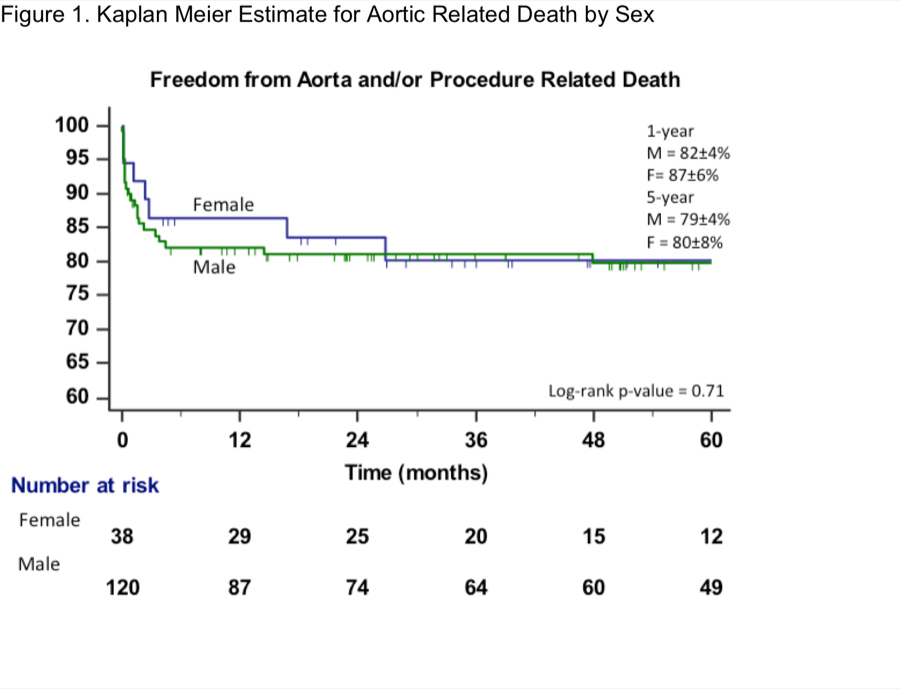Sex Differences in Patients Undergoing Thoracic Endovascular Aortic Repair for Acute Complicated Type B Dissection
Amanda C. Filiberto, Eric Pruitt, Sara Hensley, Salvatore T. Scali, Martin R. Back, Dean J. Arnaoutakis, Thomas S. Huber, Gilbert R. Upchurch Jr.
University of Florida, Gainesville, FL
Background: Previous reports have highlighted differences in outcomes between men and women who undergo treatment of elective and non-elective degenerative aneurysm. However, there is a paucity of data describing sex-based differences surrounding thoracic endovascular aortic repair (TEVAR) of acute complicated type B aortic dissection. The objective of this study was to assess sex-based differences in demographics, clinical presentation, time to repair, and outcomes in patients undergoing TEVAR for acute complicated type B dissection. Methods: Patients undergoing TEVAR (n=159) for acute complicated type B dissection from a single academic medical center were analyzed. Demographics, clinical presentation, time to repair and outcomes were stratified by sex (females, n= 38, 24%). The primary end-point was 30-day mortality. Secondary end-points included complications, re-intervention and survival. Logistic regression was used for risk-adjusted comparisons and life-table methodology estimated freedom from end-points. Results: There were no sex differences in age, prevalence of comorbidities, or clinical presentation for patients undergoing TEVAR of acute complicated type B dissection. Time from symptom onset/admission to repair was significantly longer for female patients (female, median 3.5 days [IQR 1,10] vs. male, 1.0 day [IQR 1, 3]); however, there were no significant differences in unadjusted aortic/procedure related death, in-hospital death, or 30-day mortality. When adjusting for sex, age, preoperative spinal cord ischemia and emergent admission, sex did not significantly impact outcomes (Table). One and 5-year freedom from aorta-related mortality was 82±4% and 79±4% for males vs. 87±6% and 80±8% for females, respectively (Figure). Conclusions: Compared to male patients, female subjects with acute complicated type B dissection undergoing TEVAR had no difference in clinical presentation or comorbidities. However, female patients underwent repair later compared with male patients. Despite these differences, there were no sex-based differences in morbidity or mortality. Age, preoperative spinal cord ischemia and emergent admission are more important predictors of mortality than sex.
Back to 2021 Abstracts


